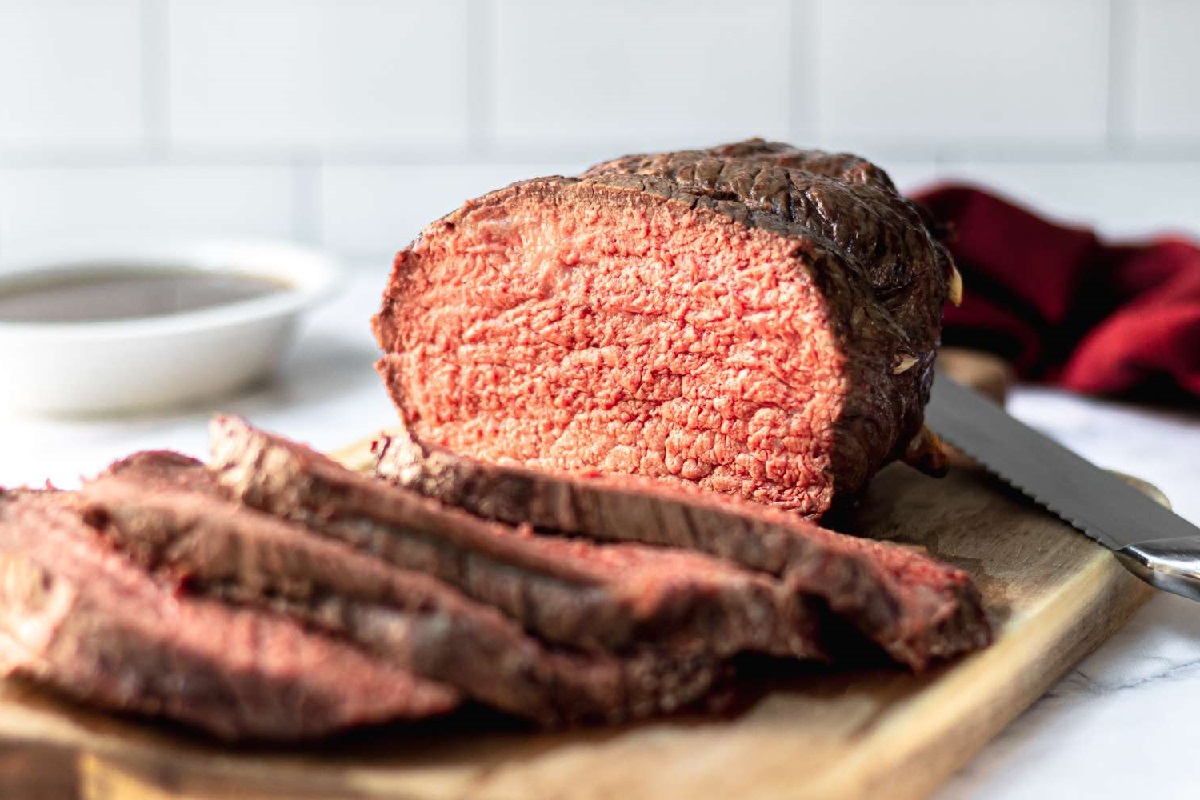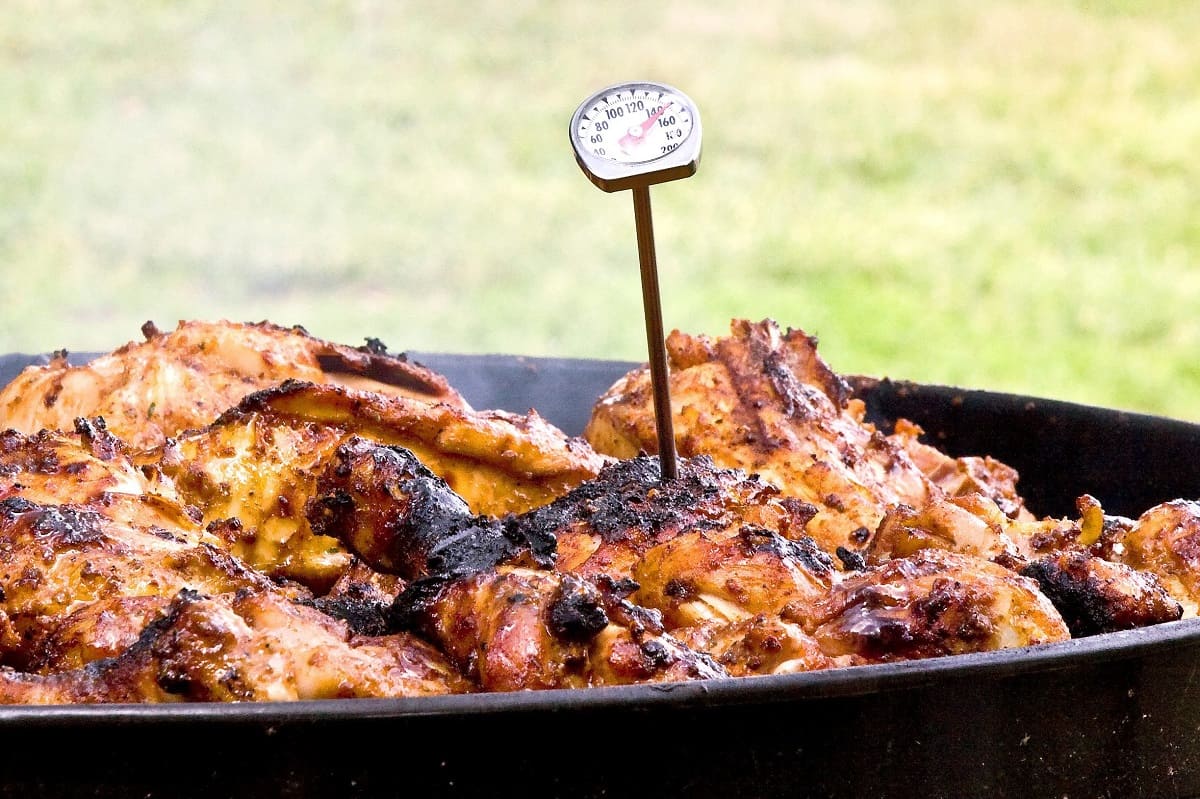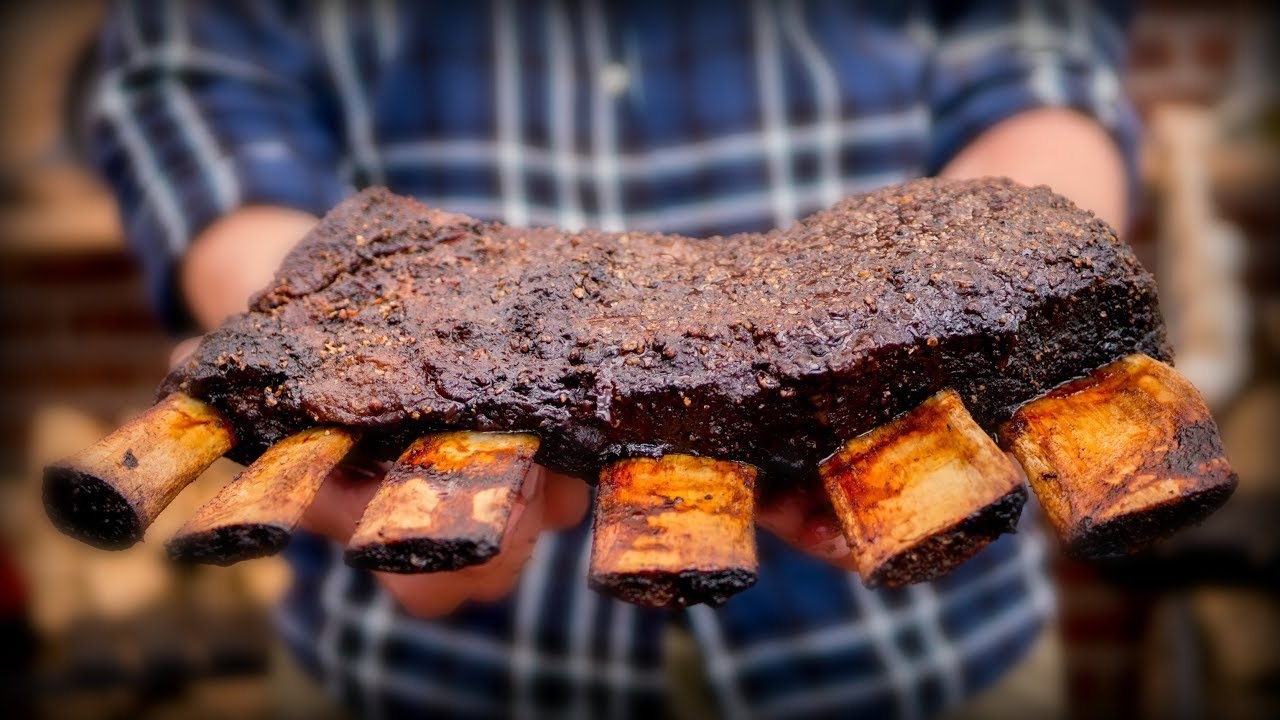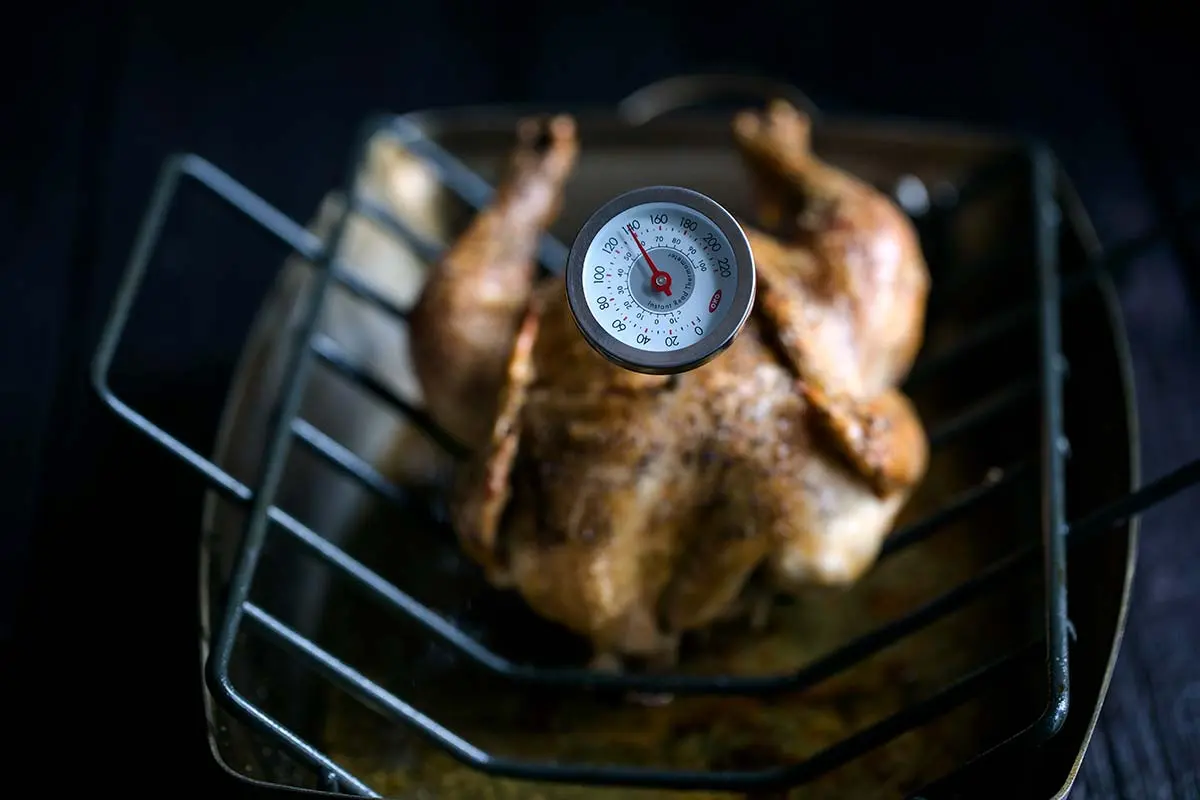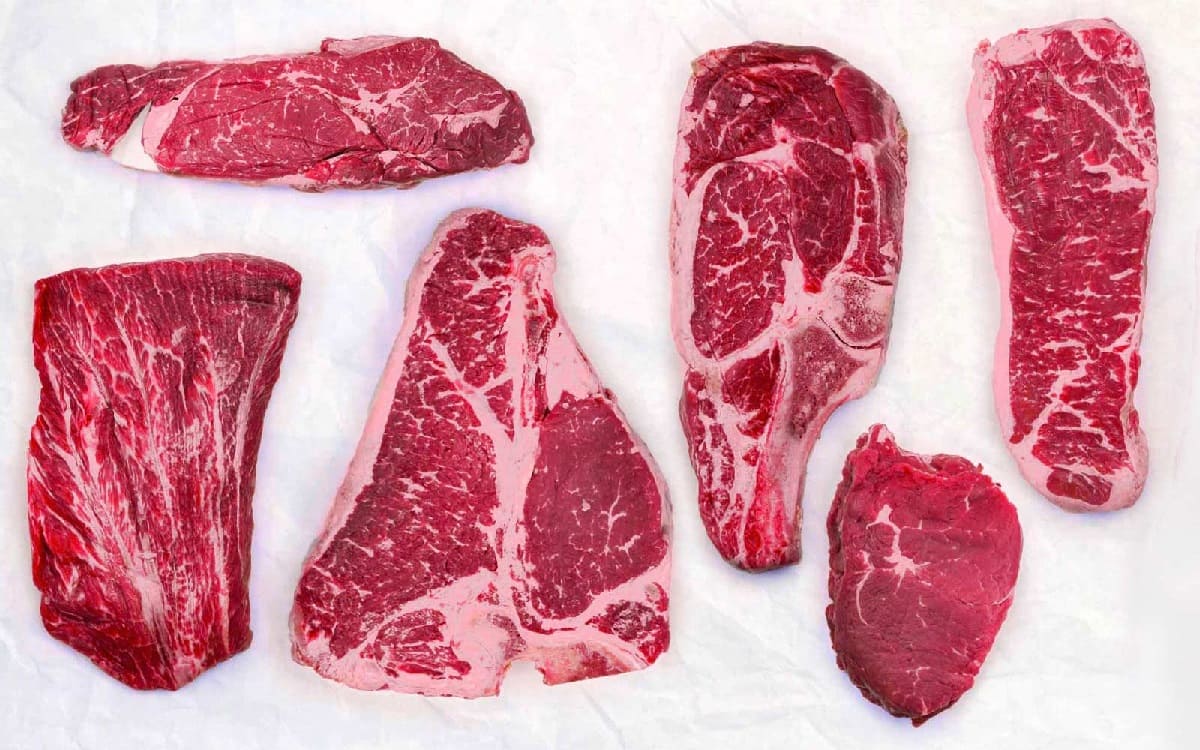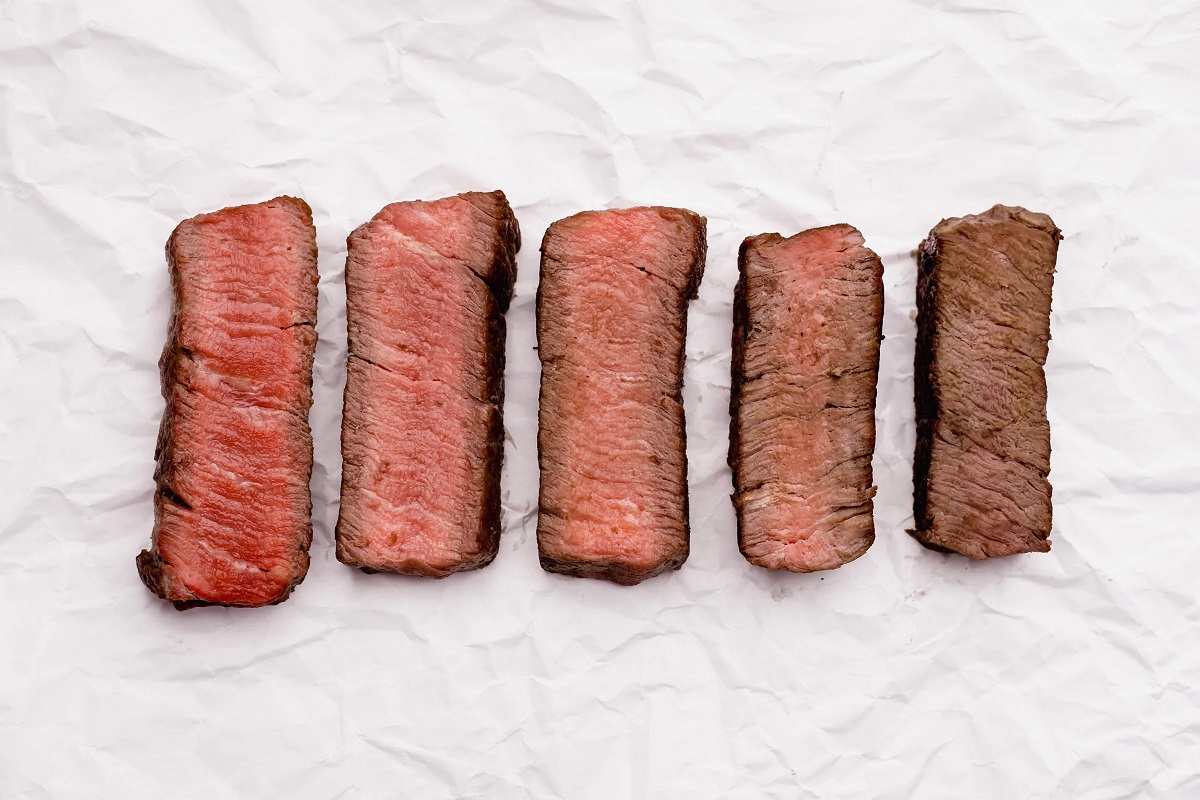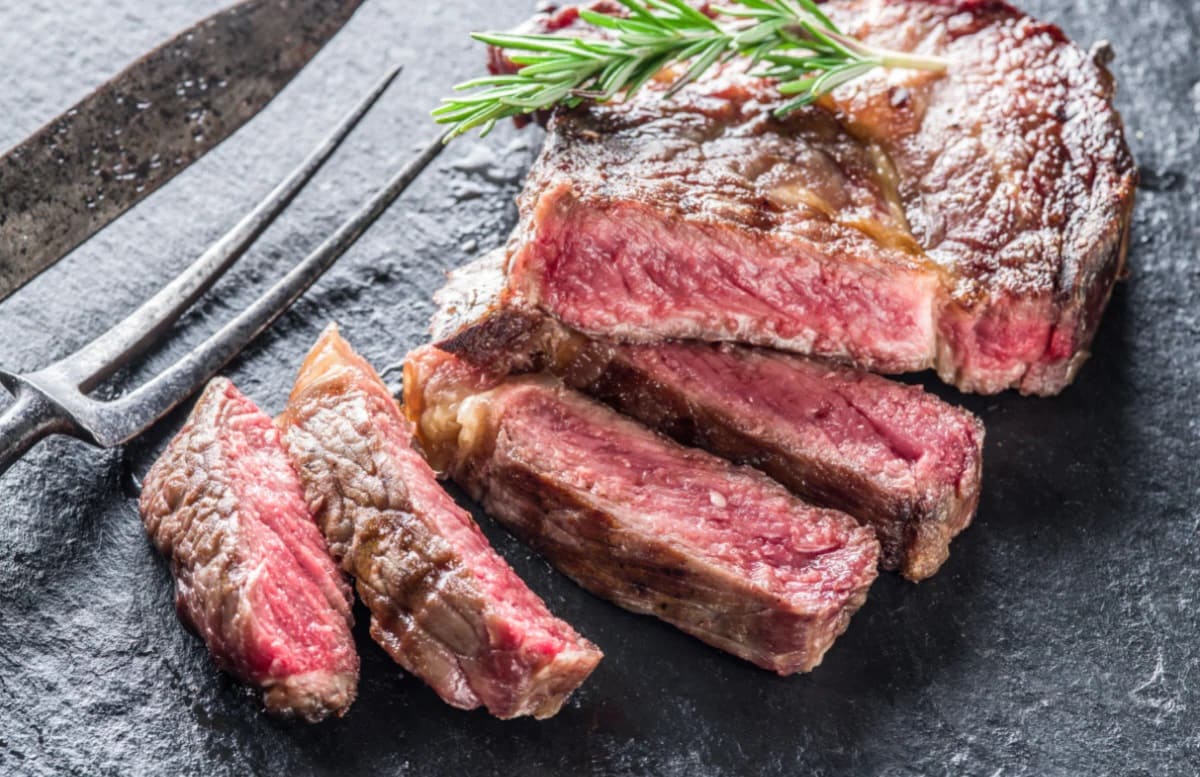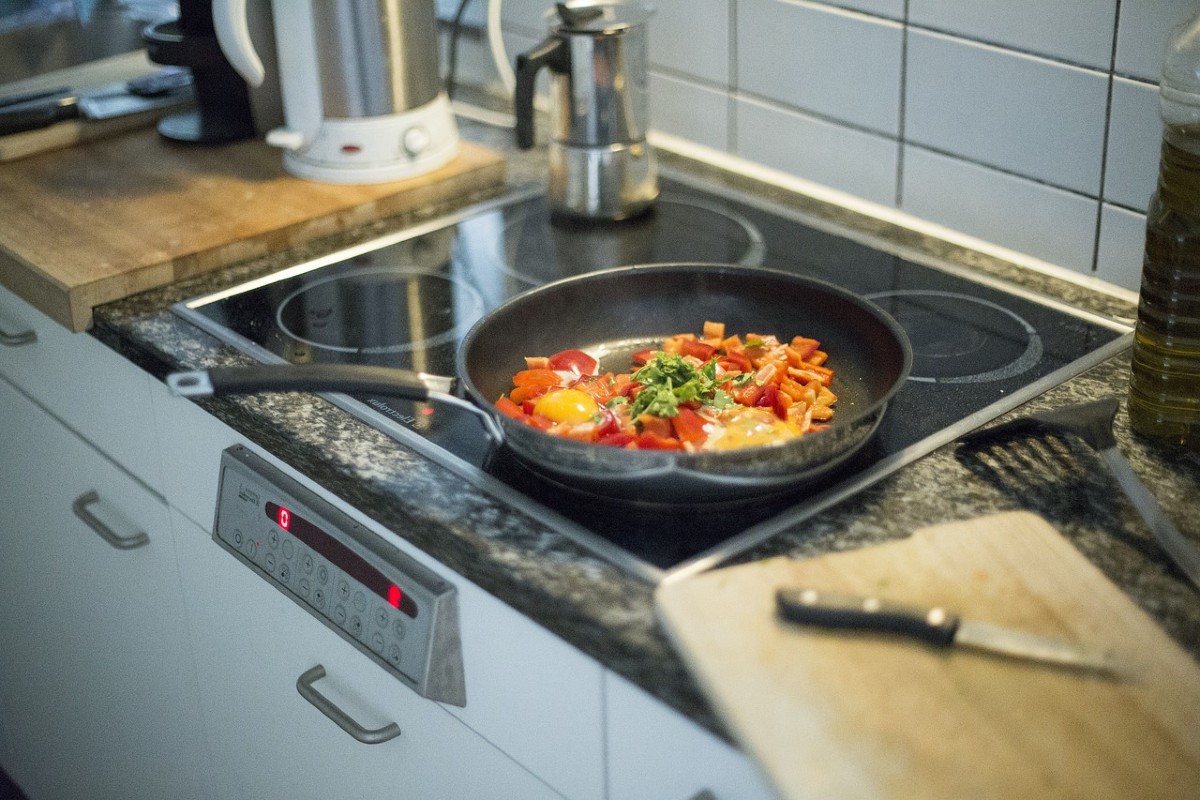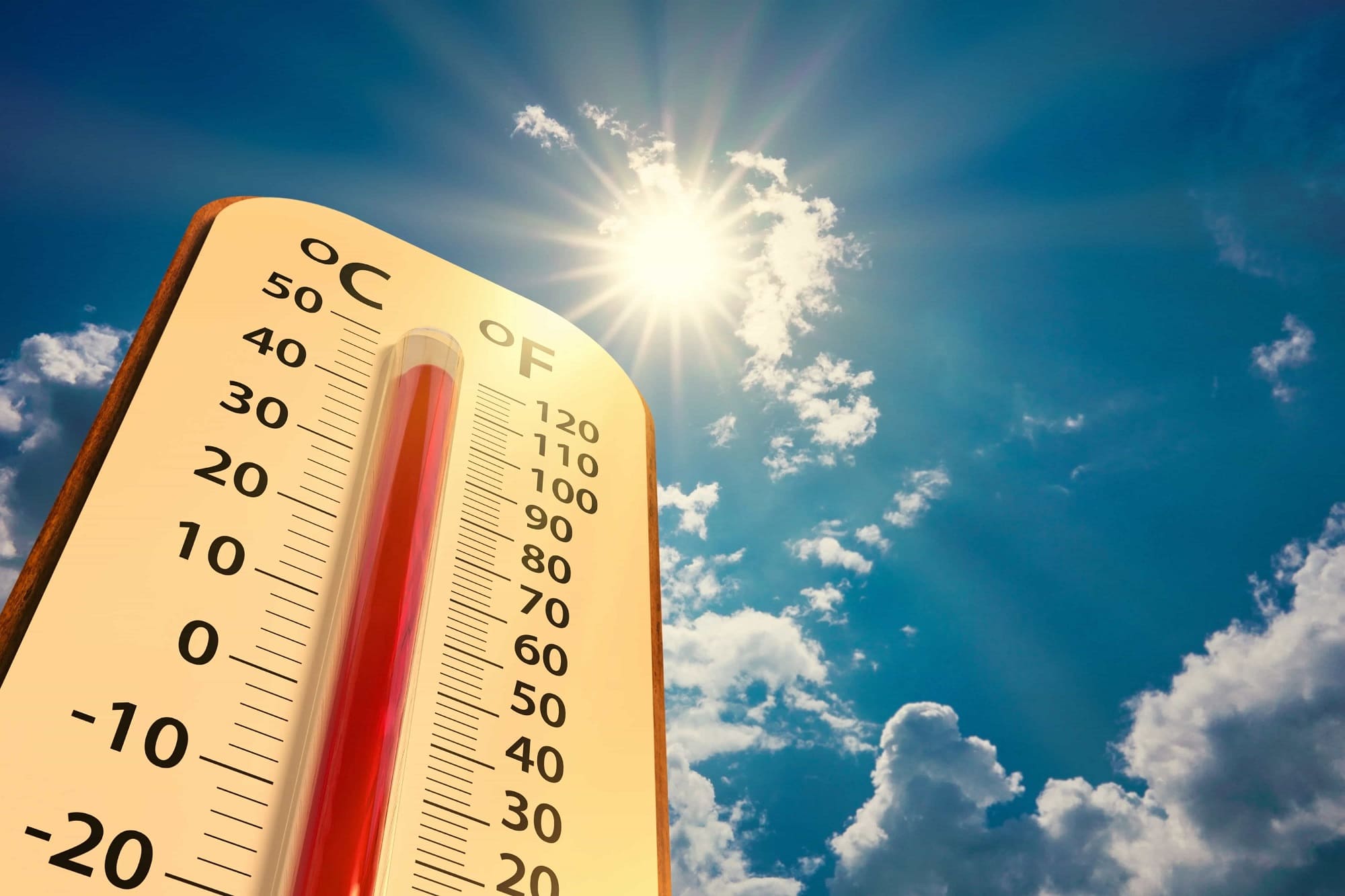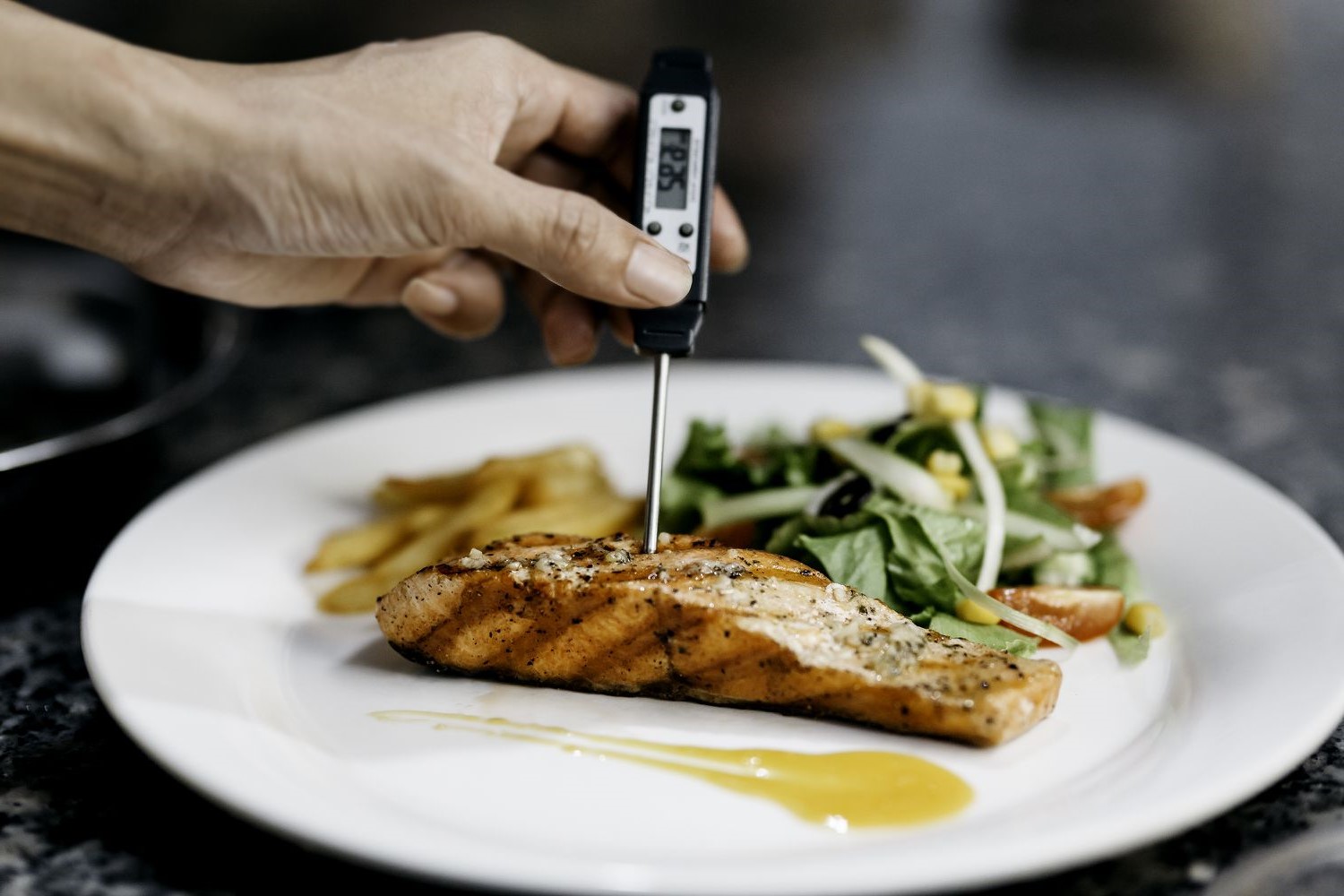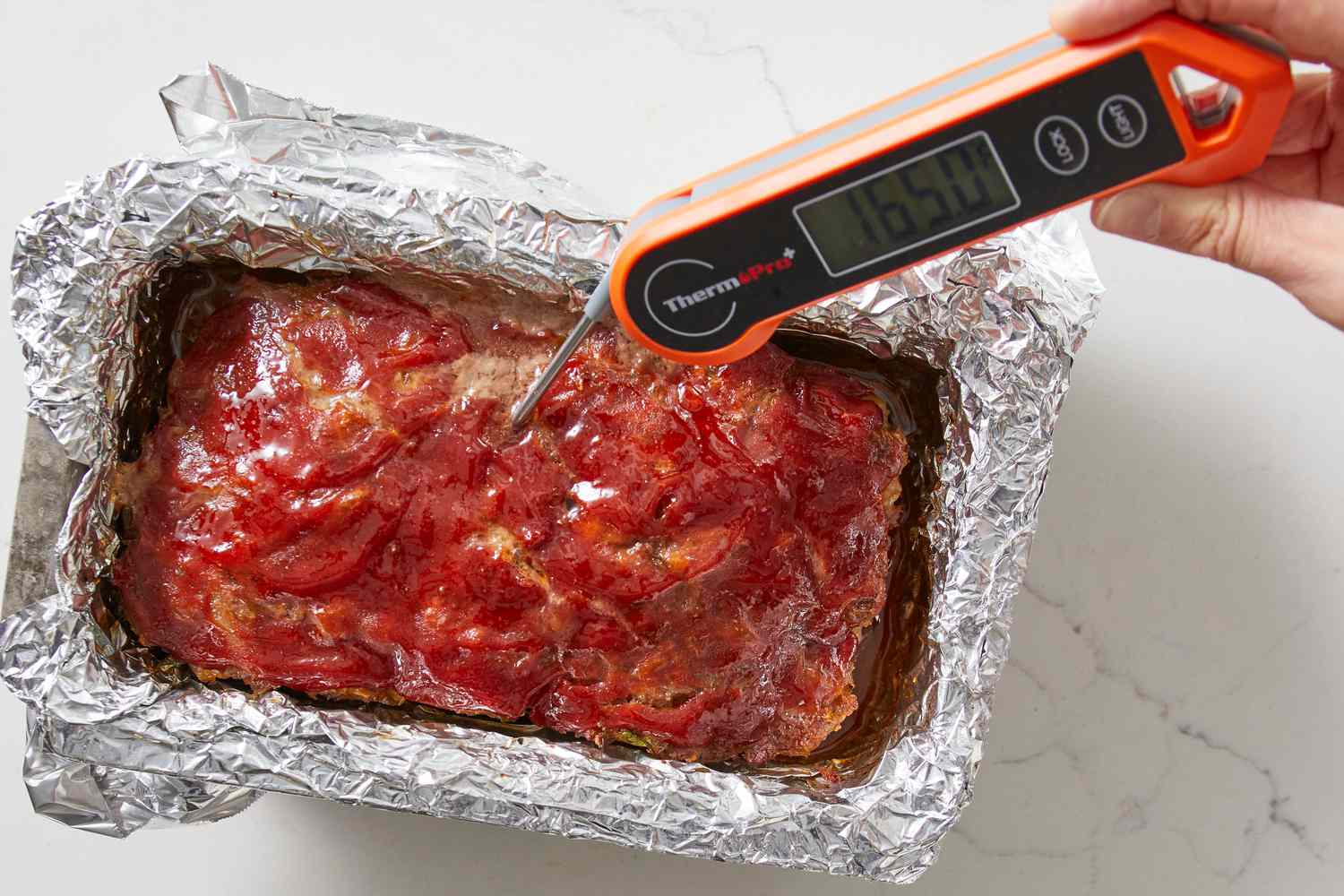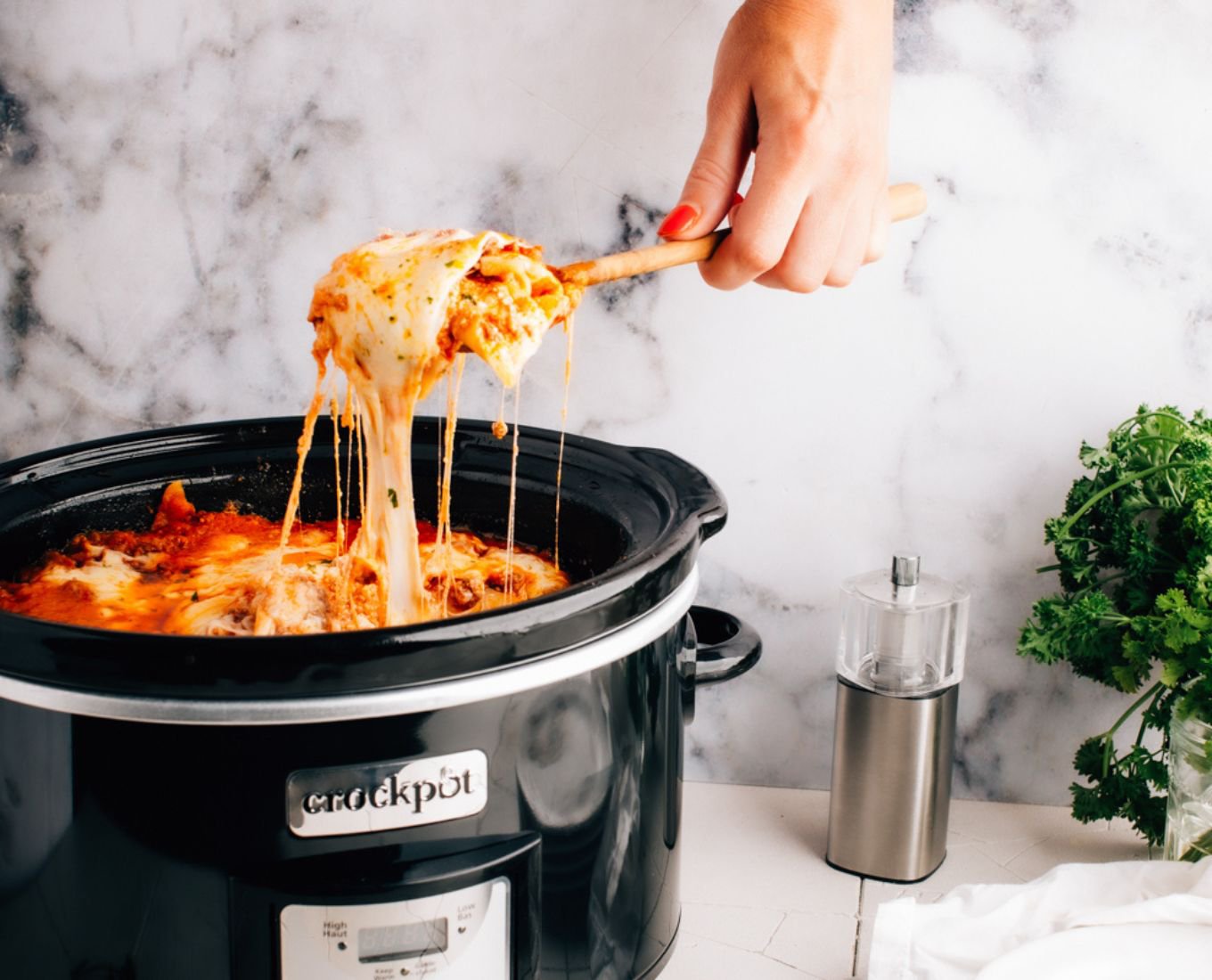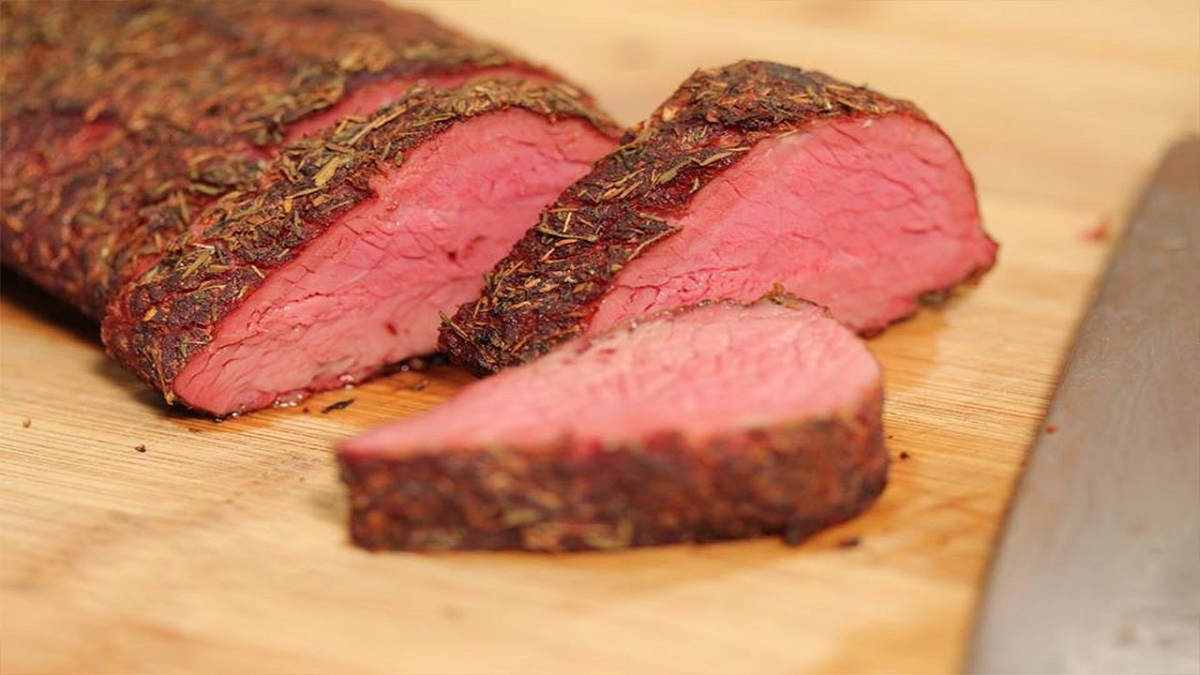Home>Culinary & Beverages>Understanding Safe Cooking Temperatures For Beef
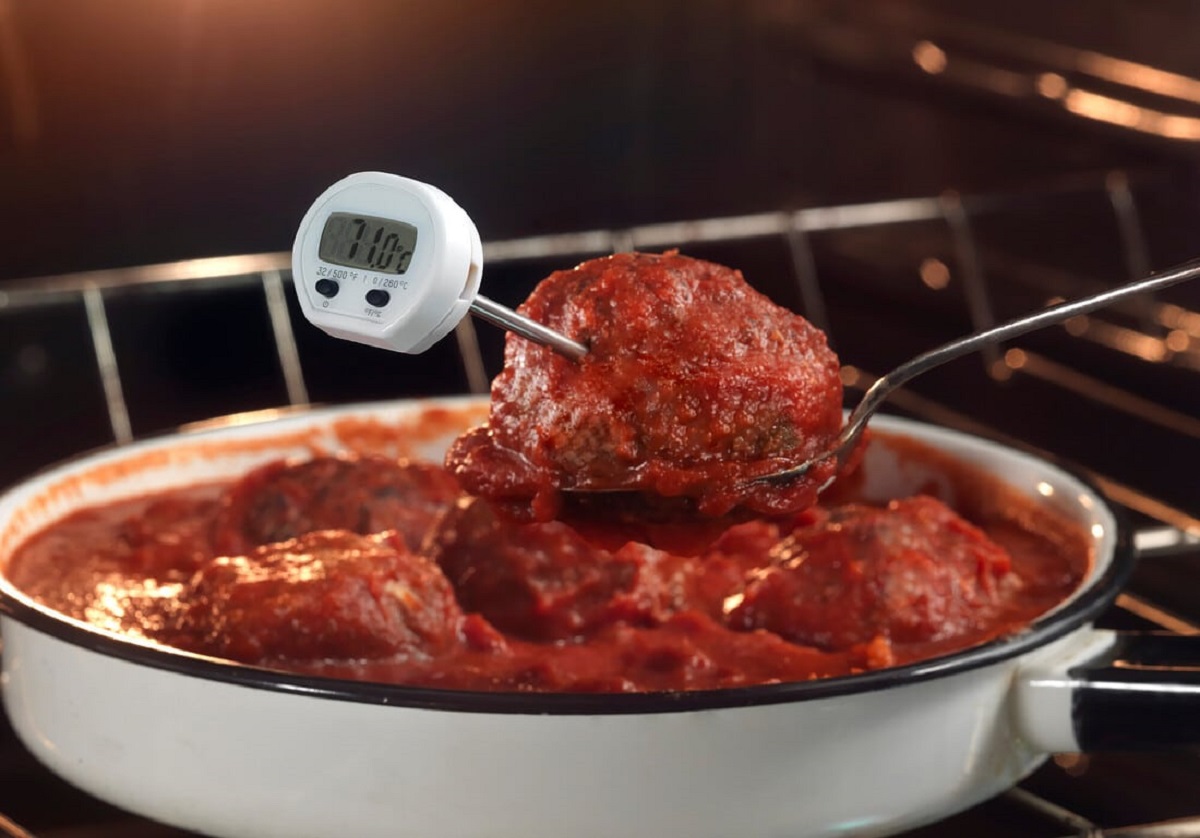

Culinary & Beverages
Understanding Safe Cooking Temperatures For Beef
Published: February 22, 2024
Learn about the safe cooking temperatures for beef to ensure your culinary creations are both delicious and safe to consume. Understanding these temperatures is essential for any culinary enthusiast.
(Many of the links in this article redirect to a specific reviewed product. Your purchase of these products through affiliate links helps to generate commission for Temperatures.com, at no extra cost. Learn more)
Table of Contents
Importance of Safe Cooking Temperatures
Ensuring that beef reaches the appropriate internal temperature during cooking is crucial for safeguarding against foodborne illnesses. Consuming undercooked beef can expose individuals to harmful bacteria such as E. coli, salmonella, and listeria, which can lead to severe health complications. By adhering to safe cooking temperatures, the risk of foodborne illnesses is significantly reduced, promoting the well-being of those enjoying beef-based dishes.
Properly cooked beef not only eliminates harmful bacteria but also guarantees a delectable dining experience. Achieving the recommended internal temperatures allows the meat to reach the desired level of doneness while retaining its juiciness and flavor. This ensures that the culinary efforts invested in preparing beef dishes are fully realized, resulting in a satisfying and enjoyable meal for all.
Moreover, adhering to safe cooking temperatures demonstrates a commitment to culinary excellence and responsible food preparation. It reflects a dedication to providing nourishing and safe meals for oneself, family, and guests. By prioritizing safe cooking practices, individuals contribute to a culture of food safety and responsible dining, fostering a healthy and enjoyable culinary environment for all.
In essence, understanding the importance of safe cooking temperatures for beef is not only about mitigating health risks but also about upholding culinary standards and promoting a culture of responsible food preparation. By prioritizing safe cooking temperatures, individuals can savor the flavors of beef dishes while safeguarding their health and well-being.
Recommended Internal Temperatures for Different Cuts of Beef
When it comes to cooking beef, achieving the ideal internal temperature is essential for both safety and taste. Different cuts of beef require specific internal temperatures to ensure they are cooked to perfection. Here's a comprehensive guide to the recommended internal temperatures for various cuts of beef:
-
Ground Beef: Ground beef, including burgers and meatloaf, should be cooked to an internal temperature of 160°F (71°C). This temperature ensures that any harmful bacteria present in the meat are effectively eliminated, making it safe for consumption.
-
Steaks and Roasts: For steaks and roasts, the recommended internal temperatures vary based on the desired level of doneness.
- Rare: An internal temperature of 125°F (52°C) is ideal for achieving a rare doneness, characterized by a warm red center.
- Medium Rare: For a medium rare doneness, the internal temperature should reach 135°F (57°C), resulting in a pink and warm center.
- Medium: Achieving a medium doneness requires an internal temperature of 145°F (63°C), resulting in a pink and slightly firm center.
- Medium Well: For a medium well doneness, the internal temperature should reach 150°F (66°C), yielding a slightly pink and firm center.
- Well Done: Those preferring a well-done steak or roast should aim for an internal temperature of 160°F (71°C), resulting in a firm and brown center.
-
Beef Brisket: When preparing beef brisket, it is recommended to cook it to an internal temperature of 195°F (91°C) to achieve the desired tenderness and succulence.
-
Beef Ribs: For beef ribs, the ideal internal temperature ranges between 180-200°F (82-93°C), ensuring that the meat is tender and flavorful.
-
Ground Beef Mixtures: When creating dishes that include a mixture of ground beef and other ingredients, such as meatballs or meatloaf, the internal temperature should reach 160°F (71°C) to guarantee thorough cooking and food safety.
By adhering to these recommended internal temperatures, individuals can confidently prepare a wide range of beef dishes, ensuring both safety and culinary excellence. Whether aiming for a rare, medium, or well-done result, understanding and implementing the appropriate internal temperatures for different cuts of beef is fundamental to achieving a delightful dining experience.
Using a Meat Thermometer for Accuracy
When it comes to ensuring the safe and precise cooking of beef, a meat thermometer is an indispensable tool for achieving accuracy in determining the internal temperature of the meat. Unlike visual cues or estimated cooking times, a meat thermometer provides an objective and reliable method for gauging the doneness of beef, thereby minimizing the risk of undercooking or overcooking.
To use a meat thermometer effectively, it is essential to insert the probe into the thickest part of the beef, ensuring that it does not touch any bone, as this can lead to a false reading. For thin cuts of beef, such as steaks, the thermometer should be inserted horizontally from the side. However, for thicker cuts and roasts, the probe should be inserted from the top to reach the center of the meat, where the temperature needs to be accurately measured.
There are various types of meat thermometers available, including instant-read thermometers and leave-in thermometers. Instant-read thermometers provide a quick and precise temperature reading when inserted into the beef and are suitable for thinner cuts. On the other hand, leave-in thermometers can remain in the beef while it cooks in the oven, allowing for continuous temperature monitoring without the need to open the oven frequently.
By using a meat thermometer, individuals can ensure that ground beef reaches the recommended internal temperature of 160°F (71°C) to eliminate any harmful bacteria. For steaks and roasts, the thermometer enables the attainment of the desired level of doneness, whether it be rare, medium rare, medium, or well done, by accurately measuring the internal temperature according to personal preferences.
Moreover, a meat thermometer is particularly valuable when cooking large cuts of beef, such as brisket or ribs, as it helps to determine when the meat has reached the optimal tenderness and succulence, ensuring a delightful dining experience for all.
In essence, the use of a meat thermometer is a fundamental practice for achieving accuracy in cooking beef. By relying on this essential tool, individuals can confidently prepare a wide array of beef dishes, knowing that the internal temperatures have been precisely measured, thereby guaranteeing both safety and culinary excellence.
Factors Affecting Safe Cooking Temperatures
Several factors can influence the safe cooking temperatures of beef, impacting the time and temperature required to achieve the desired level of doneness while ensuring food safety. Understanding these factors is crucial for implementing effective cooking practices and minimizing the risk of undercooked or overcooked beef.
-
Thickness of the Cut: The thickness of the beef cut significantly affects the cooking time and the internal temperature required for safe consumption. Thicker cuts, such as roasts and briskets, necessitate longer cooking times to allow the heat to penetrate the center and reach the recommended internal temperature uniformly. Conversely, thinner cuts, like steaks, require shorter cooking durations to achieve the desired doneness without overcooking the meat.
-
Initial Temperature of the Beef: The initial temperature of the beef before cooking can impact the cooking process. Beef that is closer to room temperature cooks more evenly and requires less time to reach the desired internal temperature compared to beef that is straight from the refrigerator. Allowing the beef to rest at room temperature for a short period before cooking can contribute to more consistent and efficient cooking results.
-
Cooking Method: The chosen cooking method, whether grilling, roasting, pan-searing, or braising, can influence the time and temperature required to cook beef safely. Each method has its unique impact on the heat distribution and the rate at which the beef reaches the recommended internal temperature. For instance, grilling may result in faster cooking times compared to roasting in an oven, necessitating adjustments in cooking temperatures and durations to ensure safe and optimal results.
-
Altitude: The altitude at which beef is being cooked can affect the boiling point of water, subsequently impacting the cooking temperature. At higher altitudes, where the boiling point is lower, the cooking temperature of beef may need to be adjusted to compensate for the reduced boiling point and ensure thorough cooking.
-
Equipment Variations: Variations in cooking equipment, such as ovens, grills, and stovetops, can influence the distribution and intensity of heat, affecting the cooking temperatures required for beef. Understanding the performance of specific cooking appliances and making necessary adjustments to accommodate these variations is essential for achieving safe and consistent cooking temperatures.
By considering these factors, individuals can adapt their cooking techniques and practices to ensure that beef reaches the recommended internal temperatures for safe consumption, thereby promoting both culinary excellence and food safety.
Tips for Ensuring Safe Cooking Temperatures
-
Use a Meat Thermometer: Utilizing a meat thermometer is the most reliable method to ensure that beef reaches the recommended internal temperatures for safe consumption. This essential tool provides accurate readings, allowing individuals to gauge the doneness of beef with precision, thereby minimizing the risk of undercooking or overcooking.
-
Allow for Resting Time: After removing beef from the heat source, it is crucial to allow it to rest for a few minutes. During this resting period, the internal temperature continues to rise, ensuring that the beef reaches the desired level of doneness while allowing the juices to redistribute, resulting in a more flavorful and succulent dining experience.
-
Consider Carryover Cooking: Understanding the concept of carryover cooking is essential for achieving safe cooking temperatures. Carryover cooking refers to the phenomenon where the internal temperature of the beef continues to rise after it has been removed from the heat source. By factoring in this additional temperature increase, individuals can ensure that the beef reaches the recommended internal temperature for safe consumption.
-
Regularly Calibrate Thermometers: It is important to calibrate meat thermometers regularly to maintain their accuracy. This simple yet crucial practice ensures that the thermometer provides precise readings, enabling individuals to rely on its measurements for safe and consistent cooking temperatures.
-
Adjust Cooking Times for Thickness: When preparing beef, adjusting the cooking times based on the thickness of the cut is vital for achieving safe cooking temperatures. Thicker cuts require longer cooking durations to ensure that the heat penetrates the center and reaches the recommended internal temperature uniformly, while thinner cuts necessitate shorter cooking times to prevent overcooking.
-
Use Recommended Cooking Temperatures: Adhering to the recommended cooking temperatures for different cuts of beef is fundamental for ensuring safe consumption. Whether cooking ground beef, steaks, roasts, or briskets, following the specific internal temperature guidelines for each cut is essential for minimizing health risks and achieving culinary excellence.
-
Monitor Altitude Variations: Individuals cooking at higher altitudes should be mindful of the impact on cooking temperatures due to the lower boiling point of water. Adjusting cooking temperatures to compensate for altitude variations ensures that beef reaches the recommended internal temperatures for safe consumption.
-
Invest in Quality Thermometers: Investing in high-quality meat thermometers, including instant-read and leave-in thermometers, is a worthwhile endeavor. Reliable thermometers provide accurate readings, contributing to the consistent achievement of safe cooking temperatures and enhancing the overall culinary experience.
By implementing these tips, individuals can confidently prepare a diverse range of beef dishes while prioritizing food safety and culinary excellence. These practices not only ensure that beef reaches the recommended internal temperatures for safe consumption but also contribute to the creation of flavorful, succulent, and enjoyable dining experiences for all.
Understanding the Dangers of Undercooked Beef
The consumption of undercooked beef poses significant health risks, primarily due to the potential presence of harmful bacteria and pathogens that can cause foodborne illnesses. One of the most notorious bacteria associated with undercooked beef is Escherichia coli (E. coli), which can lead to severe gastrointestinal infections, resulting in symptoms such as abdominal pain, diarrhea, vomiting, and in some cases, life-threatening complications. Additionally, undercooked beef may harbor other pathogens such as Salmonella and Listeria, further increasing the risk of foodborne illnesses.
Beyond the immediate health implications, the dangers of undercooked beef extend to vulnerable populations, including young children, the elderly, pregnant individuals, and those with compromised immune systems. For these individuals, the consequences of consuming undercooked beef can be particularly severe, potentially leading to long-lasting health complications and hospitalization. Therefore, understanding the risks associated with undercooked beef is crucial for safeguarding the well-being of individuals, especially those who are more susceptible to foodborne illnesses.
Furthermore, the prevalence of antibiotic-resistant bacteria in undercooked beef presents a growing concern. Inadequately cooked beef can contribute to the spread of antibiotic-resistant strains of bacteria, posing challenges in the treatment of foodborne infections and diminishing the effectiveness of antibiotics in combating these illnesses. This underscores the urgency of ensuring that beef is cooked to the recommended internal temperatures to mitigate the proliferation of antibiotic-resistant pathogens and protect public health.
In addition to the health risks, the consumption of undercooked beef can lead to negative culinary experiences, as it may result in tough, unpalatable meat that fails to deliver the desired flavors and textures. By understanding the dangers of undercooked beef, individuals can appreciate the importance of prioritizing safe cooking temperatures, not only for health and safety but also for the enjoyment of well-prepared, delectable beef dishes.
In essence, comprehending the dangers of undercooked beef underscores the critical need for adherence to safe cooking practices. By recognizing the potential health risks, particularly for vulnerable individuals, and acknowledging the implications of antibiotic-resistant bacteria, individuals can make informed decisions and take proactive measures to ensure that beef is cooked to the recommended internal temperatures, thereby promoting both food safety and culinary excellence.
